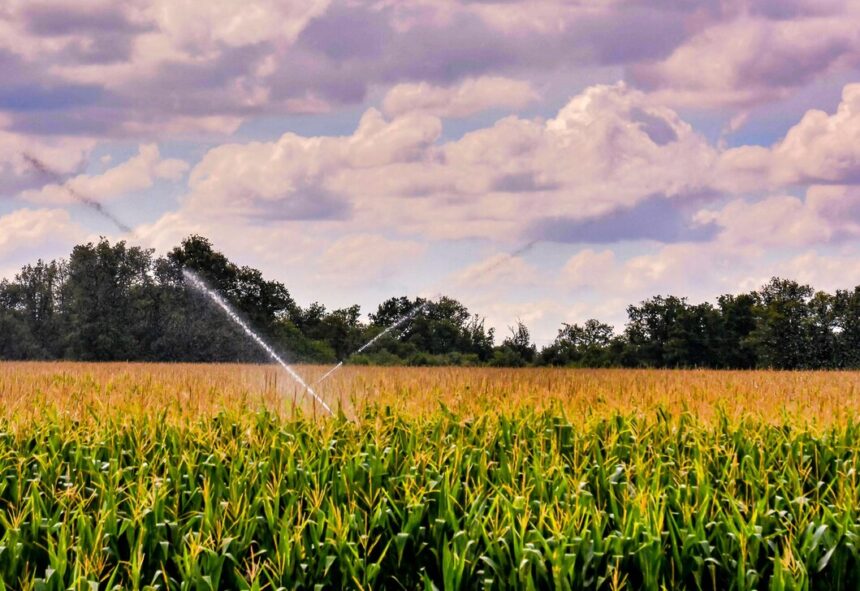Effective irrigation is crucial for successful farming in South Africa, given its varied climate and occasional water scarcity. A well-designed sprinkler irrigation system can optimize water usage, enhance crop yields, and ensure consistent plant growth. Here’s a comprehensive guide for South African farmers on setting up an efficient sprinkler irrigation system:
1. Assess Your Water Source
Before installing a sprinkler system, evaluate your water source to ensure it meets your irrigation needs. Check the flow rate and pressure of your water supply, as these factors will influence the design and type of sprinkler system you choose. If necessary, consider using water storage tanks or rainwater harvesting systems to supplement your water supply.
2. Understand Your Soil and Crop Needs
Different soils and crops have varying water requirements. Conduct a soil test to understand your soil’s water-holding capacity and drainage characteristics. Additionally, consider the specific needs of your crops, including their water requirements and spacing, to determine the most effective irrigation setup.
3. Choose the Right Sprinkler System
Sprinkler systems come in various types, including:
- Fixed Sprinklers: These are stationary and suitable for small to medium-sized fields.
- Movable Sprinklers: These can be relocated and are ideal for larger areas.
- Center Pivot Systems: These are automated and cover large areas efficiently, but require significant investment.
- Drip Irrigation: Although not a sprinkler system, it’s worth considering for precise watering of specific crops.
Select the type that best fits your farm’s size, crop requirements, and budget.
4. Design the Layout
A well-planned layout ensures uniform water distribution. Start by mapping out your field and identifying any obstacles. Design your system to cover the entire area with minimal overlap and avoid dry spots. The layout should consider sprinkler spacing, water pressure, and the terrain of your field.
5. Install Main and Lateral Lines
Install the mainline to transport water from your source to the field. Branch off into lateral lines that distribute water to the individual sprinklers. Use durable, UV-resistant pipes and fittings to withstand South Africa’s climate and ensure longevity. Properly connect all lines and check for leaks.
6. Set Up Sprinklers
Place sprinklers according to your design, ensuring they are spaced to provide even coverage. Install sprinkler heads that match your field size and type of crops. Adjust the height and angle of the sprinklers to avoid water wastage and ensure proper irrigation.
7. Integrate a Timer and Control System
A timer and control system help manage watering schedules and durations. Automated systems can be programmed to water at specific times and intervals, reducing manual labor and ensuring consistent irrigation. Consider using weather-based controllers that adjust watering based on rainfall and temperature.
8. Test the System
Before fully operationalizing your system, conduct a thorough test. Check for uniform water distribution, adjust sprinkler heads as needed, and monitor for leaks or clogs. Ensure that the system operates efficiently and meets the water requirements of your crops.
9. Maintain Regularly
Regular maintenance is key to ensuring your sprinkler system remains effective. Inspect the system frequently for leaks, blockages, or damage. Clean sprinkler heads and filters regularly to prevent clogging and ensure optimal performance.
10. Optimize Water Usage
To maximize efficiency, implement water-saving practices. Use soil moisture sensors to monitor soil conditions and adjust watering schedules accordingly. Employ techniques such as mulching to reduce evaporation and runoff.
By following these steps, South African farmers can set up a reliable and efficient sprinkler irrigation system that enhances crop productivity and conserves water. Proper planning, installation, and maintenance will ensure that your irrigation system meets your farm’s needs and contributes to sustainable farming practices.
Join 'Farmers Mag' WhatsApp Channel
Get the latest Farming news and tips delivered straight to your WhatsApp
CLICK HERE TO JOIN






